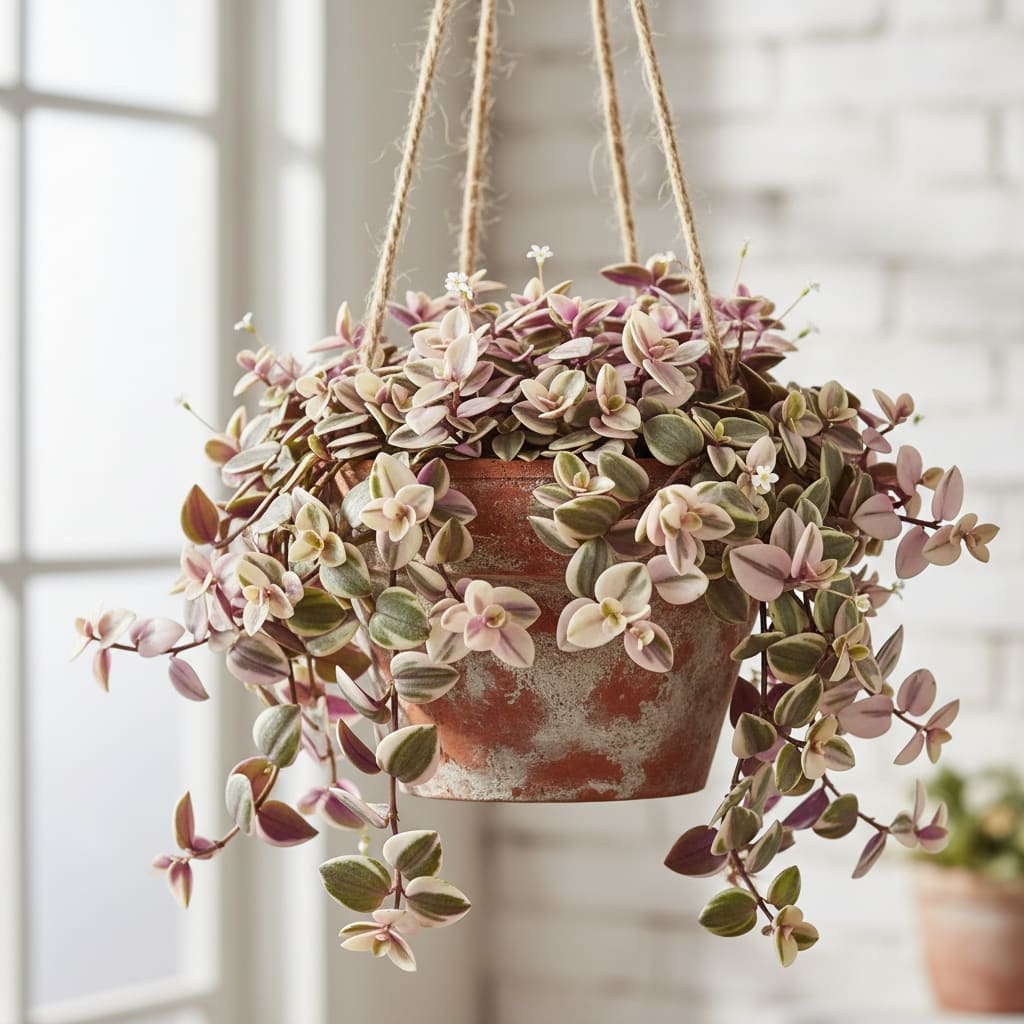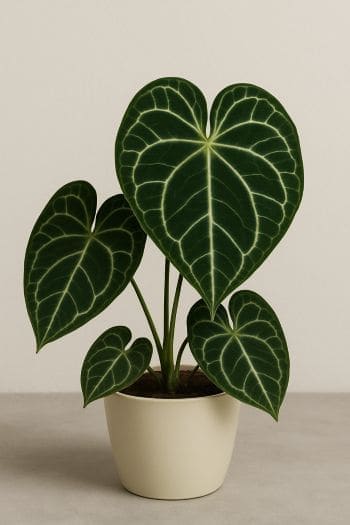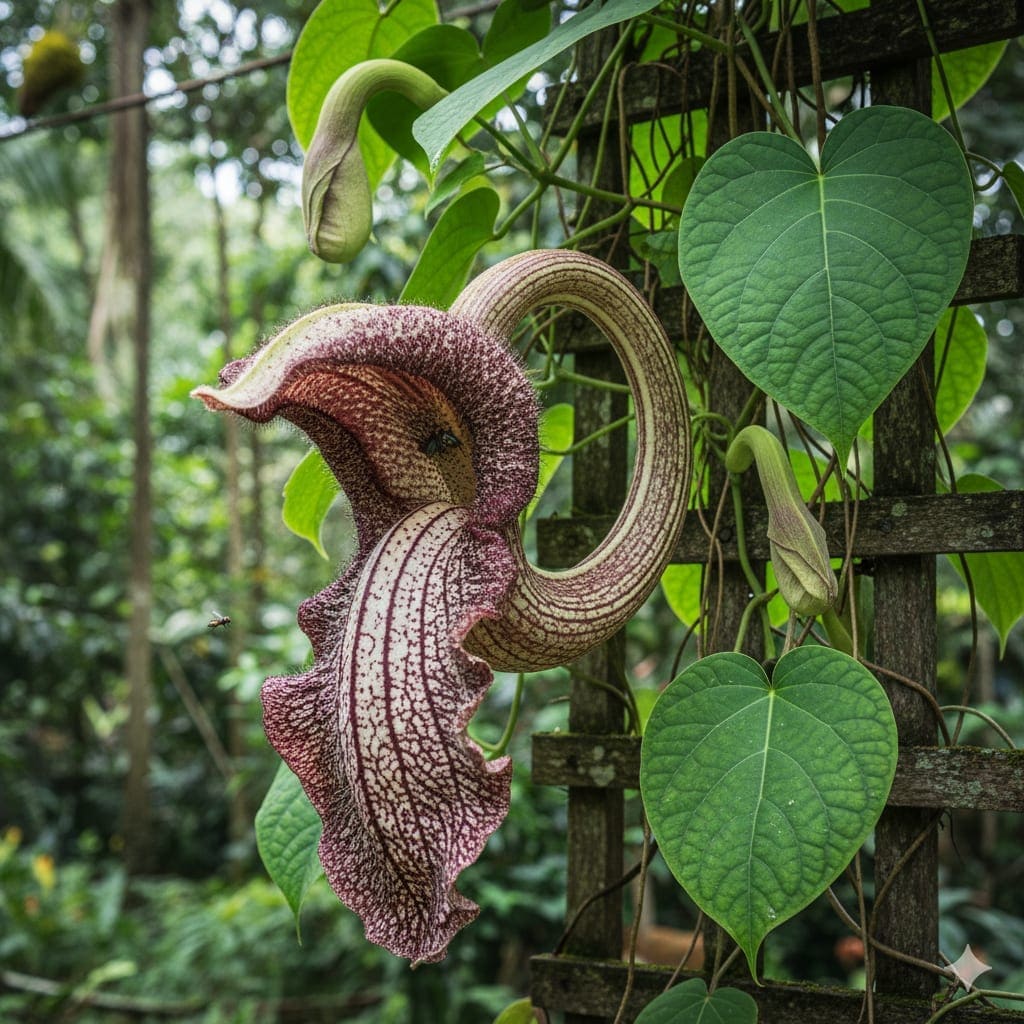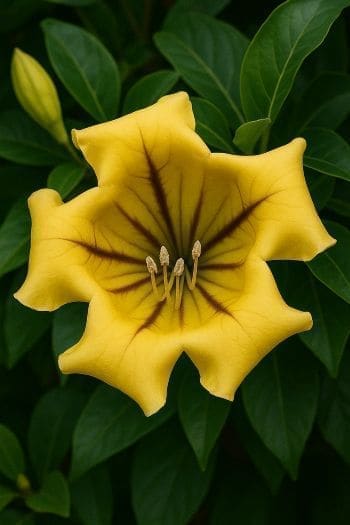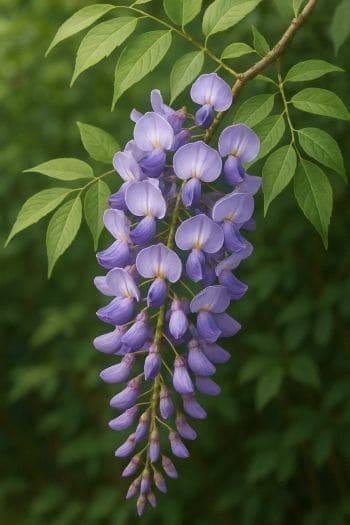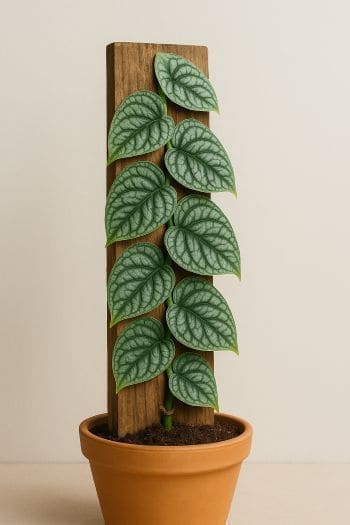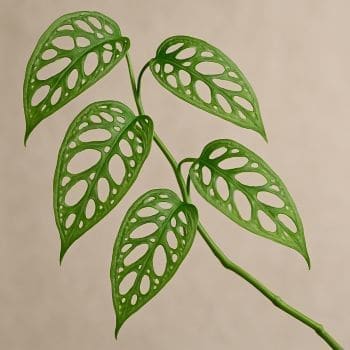Callisia repens Care & Growing Guide
Overview
Callisia repens, commonly known as Turtle Vine or Inch Plant, is a low-growing, trailing perennial native to Central and South America. It is prized for its dense mat of small, fleshy leaves that can display shades of green, purple, and pink, especially in cultivars such as ‘Pink Lady’. This semi-succulent species is adaptable and relatively easy to maintain, making it a popular choice for hanging baskets, tabletop planters, or as a groundcover in warm climates.
In its native range, Callisia repens often grows as a creeping groundcover in warm, humid environments. Indoors, it thrives when given bright, indirect light and moderate watering, and can be trained to climb or cascade depending on your styling preference.
Identification & Growth Habit
Callisia repens forms dense mats of small, oval leaves measuring about 1–2 cm long. The foliage is typically green on top with purple undersides, and variegated cultivars may show pink and cream tones. Stems are slender, flexible, and can root at nodes when in contact with soil, aiding its spreading habit.
Growth is naturally trailing, making it ideal for hanging baskets, shelves, or cascading over container edges. With support such as a trellis or moss pole, stems can be gently trained upward, though the plant’s natural inclination is to sprawl horizontally or drape downward.
Light & Placement
- Light: Bright, indirect light is best to maintain vibrant foliage colors. A few hours of gentle morning sun can enhance pink tones, especially in ‘Pink Lady’ forms.
- Avoid: Harsh midday or afternoon sun, which can scorch leaves.
- Indoors: Place near an east- or north-facing window, or a few feet back from a bright south- or west-facing window with sheer curtains.
Watering & Humidity
As a semi-succulent, Callisia repens stores some water in its leaves and stems, so it is more tolerant of short dry spells than prolonged wetness.
- Water when the top 1–2 inches (2.5–5 cm) of soil feel dry to the touch.
- Ensure containers have drainage holes to prevent waterlogging and root rot.
- Reduce watering frequency in cooler months when growth slows.
Humidity: Prefers moderate to high humidity. In dry indoor air, especially in winter, use a humidity tray, group plants together, or mist occasionally. Avoid excessive misting that keeps foliage wet for prolonged periods, as this can encourage fungal issues.
Soil & Repotting
- Soil: A well-draining mix is essential. Use a cactus/succulent blend or regular potting soil amended with sand or perlite.
- Repotting: Repot every 1–2 years or when roots fill the container. This plant tolerates being slightly root-bound but benefits from fresh soil to replenish nutrients.
Fertilizing
Feed monthly during the active growing season (spring and summer) with a balanced, water-soluble fertilizer diluted to half strength. Avoid over-fertilizing, which can cause leggy growth. Suspend or reduce feeding in fall and winter when growth naturally slows.
Pruning & Training
- Regularly pinch back stem tips to encourage bushier growth and prevent legginess.
- Remove any yellowing or damaged leaves promptly.
- For a climbing display, guide stems onto a small trellis or moss pole, securing gently with plant ties.
- For cascading growth, allow stems to drape freely from hanging containers.
Propagation
Callisia repens is easy to propagate, making it simple to share with friends or rejuvenate older plants.
Step-by-Step Stem Cutting Method
- Select a healthy stem tip with several leaves.
- Using clean scissors or pruners, cut a 3–4 inch (7–10 cm) section just below a node.
- Remove the lower leaves to expose 1–2 nodes.
- Place the cutting in a glass of water or insert directly into moist, well-draining soil.
- If rooting in water, change the water every few days to keep it fresh.
- Roots typically develop within 1–2 weeks; transplant water-rooted cuttings into soil once roots are about 1 inch (2.5 cm) long.
Common Problems
Pests
- Spider mites: Look for fine webbing and stippled leaves. Treat with insecticidal soap or neem oil, and increase humidity.
- Mealybugs: White, cottony clusters on stems or leaf joints. Remove manually with a cotton swab dipped in alcohol, or use horticultural oil.
Diseases
- Root rot: Caused by overwatering or poor drainage. Remove affected roots, repot in fresh, well-draining soil, and adjust watering habits.
- Leaf spot/fungal issues: Can occur in overly humid, stagnant air. Improve airflow and avoid wetting foliage late in the day.
Toxicity & Pet Safety
Callisia repens is considered toxic to pets if ingested, potentially causing irritation or digestive upset. Keep out of reach of cats, dogs, and other animals, and supervise closely if grown indoors where pets roam.
Styling & Decor Tips
- Use in hanging baskets to showcase trailing stems and colorful foliage.
- Combine with other small-leaved trailing plants for a mixed display.
- Place on high shelves or plant stands where stems can cascade naturally.
- Highlight variegated cultivars in bright, indirect light to maximize pink and cream tones.
Varieties & Cultivars
- Callisia repens ‘Pink Lady’: Variegated foliage with green, cream, and pink hues; pink intensifies with brighter light.
- Callisia repens ‘Bianca’: Similar to ‘Pink Lady’ but with more pronounced cream and white variegation.
- Callisia repens (standard form): Solid green leaves with purple undersides.
Buying Tips & Maturity
- Look for dense, compact growth with vibrant coloration; avoid plants with sparse stems or yellowing leaves.
- Check for pests on leaf undersides and stem joints before purchase.
- Young plants establish quickly; mature specimens can form thick mats or long cascades within a single growing season under good care.
Seasonal Care
- Spring/Summer: Active growth period; water and fertilize regularly, prune to shape, and propagate as desired.
- Fall/Winter: Growth slows; reduce watering, hold off on fertilizing, and maintain adequate light to prevent legginess. Protect from cold drafts and temperatures below 60°F (15°C).
FAQ
- How fast does Callisia repens grow? In optimal conditions, it can produce noticeable new growth within weeks and fill a container in a few months.
- Can Callisia repens grow outdoors? Yes, in frost-free climates it can be grown outdoors as groundcover or in containers. In cooler regions, treat it as a houseplant or bring it indoors before frost.
- Why are my plant’s leaves losing color? Insufficient light is the most common cause; move to a brighter location with indirect light to restore vibrancy.
- Is Callisia repens drought-tolerant? It tolerates short dry spells due to its semi-succulent nature but prefers consistent moderate moisture.
- How do I make my plant bushier? Regularly pinch back stem tips to encourage branching and denser foliage.
